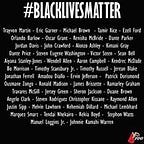Brief Ohio Congressional District 11 Special Election Post-Mortem
Like everyone who volunteers on a campaign (as opposed to field staff who are generally a mix of hired guns and true believers) I allowed myself to be swept up in the mythology of the Nina Turner campaign, most importantly the idea that it could win, or else why work for free? In the proverbial cold light of day, however, taking a structural look at the race between Turner and Shontel Brown, it’s not particularly surprising that Brown would win. This is not to say anything negative about Turner’s campaigning acumen, or overall quality as a candidate. I thought she ran just about the best campaign she could have for the District she was in, but just the odds of any candidate under the broad Berniecrat/Justice Democrat/Squad/Working Families Party/DSA umbrella winning a Democratic Primary in this particular district were always pretty low.
The race was confusing to out of state Bernie Sanders supporters who volunteered because they assumed that Nina Turner having a national profile meant that she would be extra specially popular on her home turf of Ohio. (I honestly think when people referred to the candidate as “Senator Turner” many of them thought she had been a US Senator and not a State Senator) In reality Ohio 11 almost could not have been conceived to be more difficult for Turner and her politics post 2016. Bernie Sanders lost badly to both Hillary Clinton and Joe Biden in this District. Most of the reliable voters in Ohio 11 (meaning the type of people who will turn out to an odd numbered year Congressional Special Election at an add time) are very similar to the type of voters who ended Bernie’s 2020 Presidential campaign in South Carolina: Jim Clyburn Democrats i.e. older more conservative black Democrats who are party loyalists but not progressive. Making things even more difficult for Turner were another group who organized themselves against her early: right wing pro-Israel Jewish voters in the Eastern suburbs of Cleveland.
Given these realities on the ground, Turner ran about the best campaign she could have. As opposed to featuring her fiery rhetoric as Bernie Sanders’ most popular campaign surrogate instead Turner emphasized her long history in the District as a City Councilwoman (and major protege of four term Cleveland Mayor Frank Jackson) and State Senator. She lined up an impressive array of endorsements from Northeast Ohio Democratic Officials, including some who are just about as “establishment” as you can get: including Frank Jackson and just about every City Councilman, State Rep, and State Senator in the District. (In a meeting of the DSA Cleveland Chapter debating various motions to get involved with the Turner campaign in some formal capacity these connections were brought up as a negative, saying they meant Turner was “too establishment,” showing the difficulty of the line she had to tow). Turner’s campaign even went beyond that and showed times when she had been willing to work with Republicans, such as working with former Ohio Governor John Kasich on a plan to improve Cleveland schools and on some sort of commission about police issues.
Unlike the case in a typical Justice Democrats Primary situation Turner had far more name recognition and wasn’t running against an incumbent. These are I think the only two things that were in her favor. Shontel Brown was relatively little known and already had a lot of negatives associated with her. The highest elected office Brown had ever achieved was her current position on the Cuyahoga County Council. The County Council is an obscure legislative body that has only existed for ten years. It’s not uncommon for even politically engaged people to not know who their County Councilperson is. Being a County Councilperson is technically considered a part-time job.
But Brown also had a more prominent role in County politics as the Chairperson of the Cuyahoga County Democratic Party. However this may have done as much harm as good as she’s been a divisive Chair who has had her share of scandals and bad publicity, most recently with a surprise “purge” of nearly one hundred rank and file party officials from membership, which included several Democratic elected officials and other stalwart volunteers and party loyalists.
These were the only factors in Nina Turner’s favor. But then there was a bigger factor than all of these: the immense amount of outside, dark money spent for Brown and against Turner. Millions of dollars of outside PAC money was spent either for Brown or against Turner. Nina was right that she was defeated by “evil money” and the whole thing sets up a scary precedent for similar intra-party battles in the future. For contrast, I believe I saw somewhere that there was only $22,000 in outside spending against Cori Bush when she defeated Lacy Clay on the second attempt. (I saw this somewhere but am having trouble finding it again.) It’s very curious to me why these conservative PACs would spend so much more money to prop up a non-incumbent with little track record and defeat Nina Turner than to defeat the much more left wing Cori Bush versus a guy who’d been in Congress for decades and had a leadership position. But this is what ultimately made the difference in the race. If there was a moment when if election day was held early Turner may have been able to win the race with her greater name recognition and impressive local Democrat endorsements, that moment was over once an ad blitz by outside groups made it clear which side of the Bernie Democrat vs. Jim Clyburn Democrat divide she is on.
